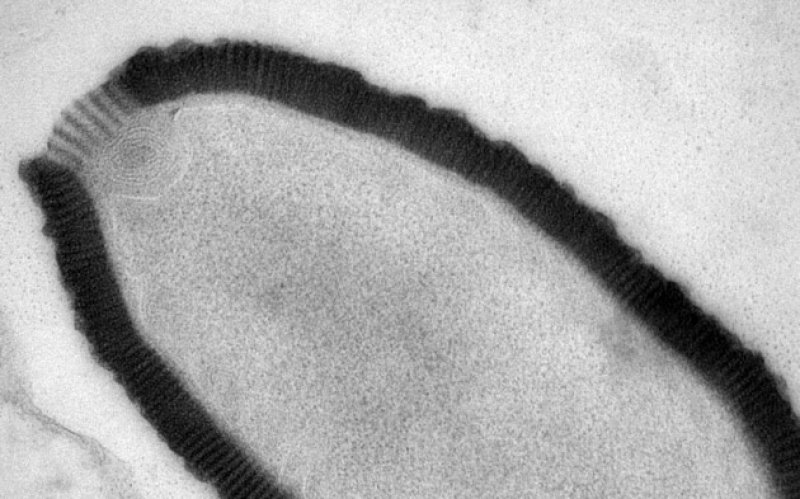Pithovirus isn’t the first giant to be pulled from the Siberian tundra’s icy depths, but it is the smallest. Invisible without a microscope, it’s nonetheless the largest virus ever. It’s also 30,000 some odd years old, new to science and still kicking.
According to a report published this week in the Proceedings of the National Academy of Scientists, the new virus was discovered by a group of researchers led by Chantal Abergel and Jean-Michel Claverie at Aix-Marseille University in France. Carl Zimmer, in a report for the New York Times, calls the two “veteran virus hunters, specializing in finding new species of so-called giant viruses.” The virus comes from samples of permafrost taken from a Siberian riverbank in 2000.
Giant viruses are a thousand times bigger than their non-giant kin and typically infect single-celled amoeba. This knowledge underpins the terrifyingly simple method of testing the researchers used. Zimmer writes:
To search for giant viruses in the samples, the French researchers added bits of the permafrost to colonies of amoebae to see if any viruses in the permafrost could infect them. The amoebae began to die — a sign that something in the permafrost was killing them. When the scientists examined the colonies, they discovered that giant viruses were multiplying inside the amoebae.
In other words, all it took was a quick thaw and this virus got right back to work. On the one hand, this isn’t entirely shocking, given that viruses already exist at the line between life and death. But the new virus is a full 25 percent bigger than its closest rival, and, Abergel told Zimmer, “sixty percent of its gene content doesn’t resemble anything on earth.”
It has a remarkably small amount of genetic material relative to other known giant viruses, and its discovery could be indicative of a greater diversity in these macro microbes than previously suspected. USA Today’s Traci Watson wrote that it could represent “a new branch” in the giant virus family tree.
It’s undoubtedly a fascinating find in terms of biology, but what about the apparent ease with which it was revived? If this virus can resume its infectious behavior with after a thaw, what about other viruses that might be more interested in targeting human cells rather than amoebas? New Scientist’s Andy Coghlan focuses on the human health implications: “There’s good reason to think there could be pathogenic viruses in there too,” Abergel told him. Claverie, Abergel’s co-leader, paints a worrying picture:
Thirty percent of the world’s oil reserves are thought to be hidden under the permafrost, along with gold and other key minerals, so exploration is bound to increase,” says Jean-Michel Claverie …”So we must be careful to take precautions when prospecting – if people become sick with strange symptoms, it might be wise to quarantine and clear them of dangerous new infections before sending them back,” he says.
Beyond the immediate threat of novel pathogens emerging as the permafrost thaws, as we dig ever deeper in search of natural resources, there’s a concern among some scientists that, Coghlan writes, “awakened microbes in thawing permafrost may increase global warming by digesting organic matter and releasing greenhouse gases such as methane and carbon dioxide.”
The team that discovered Pithovirus is already looking for more viruses in their permafrost samples. Whether the scientists, or another team, discover a pathogenic virus anytime soon is a matter of speculation.
What we do have is a record-setting little giant that waited out an ice-age. We write a lot at the Genetic Literacy Project about synthesizing new life, but Pithovirus is a reminder that nature is rife with surprises.
Kenrick Vezina is Gene-ius Editor for the Genetic Literacy Project and a freelance science writer, educator, and amateur naturalist based in the Greater Boston area.































